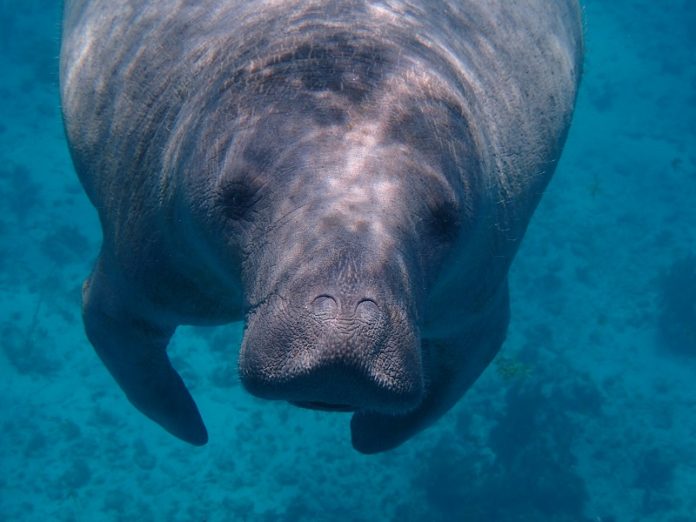
Scientists recently made an exciting discovery about how a prehistoric sea cow became prey for two different predators—a crocodile and a shark.
This event happened millions of years ago during the Early to Middle Miocene epoch, a time period ranging from about 23 to 11.6 million years ago. The findings provide a glimpse into the ancient food chain and how creatures interacted in the wild back then, much like they do today.
The study, published in the Journal of Vertebrate Paleontology, focuses on a sea cow from the now-extinct group called dugongines, which belonged to the genus Culebratherium.
These sea cows were similar to modern dugongs and manatees, gentle, slow-moving marine animals that grazed on underwater plants. However, this particular sea cow met a violent end in what is now northwestern Venezuela.
When scientists examined the fossil of the sea cow’s skull, they found clear evidence of predation. The first predator to attack was likely an ancient crocodile.
The crocodile left deep bite marks on the sea cow’s snout, indicating that it tried to grab the animal’s head, probably to suffocate it. This behavior is similar to how modern crocodiles hunt.
Other marks on the bones suggest the crocodile dragged and tore the sea cow’s body, possibly using a move called a “death roll”—a spinning technique modern crocodiles use to tear apart their prey.
But the story doesn’t end there. After the crocodile had finished with its meal, another predator, a tiger shark (Galeocerdo aduncus), came in to scavenge what was left.
Shark teeth and bite marks were found on the sea cow’s neck and skeleton, showing that the remains were picked apart by the shark after the initial attack by the crocodile.
The discovery is special because it’s one of the few times scientists have found evidence of a single animal being attacked by multiple predators in the fossil record.
This kind of behavior is common in today’s world, where predators kill an animal and scavengers, like sharks, vultures, or hyenas, come in afterward to eat what’s left. However, finding fossil evidence of this is rare.
A team of paleontologists from several institutions, including the University of Zurich and the Natural History Museum of Los Angeles County, worked on this study.
Lead researcher Aldo Benites-Palomino explained that while it’s not uncommon to find marks of ancient predators on fossils, it’s often hard to tell whether the marks were from an animal actively hunting or simply scavenging. In this case, the fossil provided clear signs that both the crocodile and shark were involved.
The sea cow’s remains were found in a region called the Agua Clara Formation, located south of Coro in Venezuela. The fossil site itself was an exciting discovery. A local farmer noticed some unusual rocks in the area and shared the information with researchers.
When the scientists visited the site, they initially didn’t know much about its geology. But after further study, they realized the rocks were from the Early to Middle Miocene epoch.
During the excavation, the team uncovered a partial skeleton, which included a portion of the skull and 18 vertebrae.
According to co-author Professor Marcelo R. Sánchez-Villagra, the discovery was remarkable, not only because of the condition of the fossils but also because of the distance from other known fossil sites in the area—about 100 kilometers away.
The dig required multiple visits and a significant amount of effort, as the sea cow’s bones were large, and a lot of sediment needed to be removed.
The well-preserved condition of the fossil helped the scientists identify the predator marks. Fine sediments at the site played a role in keeping the outer layers of the fossil intact, allowing the team to see the tooth marks clearly.
Once the fossil was located, the team organized a “rescue” operation to carefully extract it, a process that took about seven hours. It took months of delicate work to fully prepare and restore the skull and other parts of the fossil.
This discovery not only sheds light on how predators and scavengers interacted millions of years ago but also gives scientists a better understanding of the ancient food chains that existed during the Miocene.
Just like today, different animals relied on the same food sources, with predators hunting and scavengers taking what was left.
The research findings can be found in the Journal of Vertebrate Paleontology.
Copyright © 2024 Knowridge Science Report. All rights reserved.



